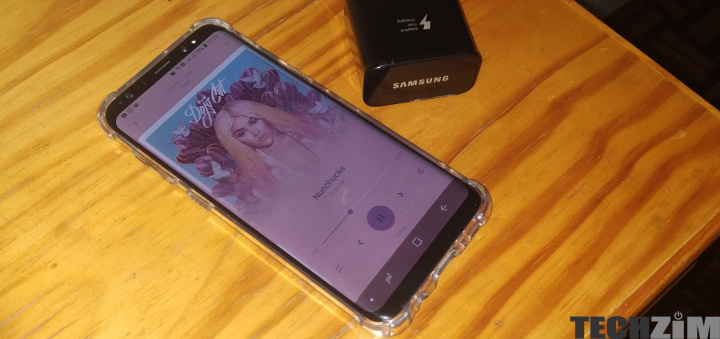Buying midrange vs buying older flagships? This was the question I was faced with after I decided to ditch my Mi A2 cause it was frustratingly big.
This meant that I was obviously looking for something more compact and in all honesty, I had found the perfect replacement in the Xiaomi Mi 9 SE for US$450 but getting it to this country of ours was extremely difficult. I then remembered that I had been craving a Galaxy S8 before I bought the Mi A2 (which I reviewed here and here).
I did some searching around and managed to get an S8 Duos for $400 and sold the Mi A2. Now after using the Galaxy S8 for two weeks I’ve seen enough to know whether my next purchase will be an older flagship or if I’ll be going back to mid-rangers.
A more refined experience
From the moment I took out the S8 from the box the refinement stood out to me. Before even turning it on I noticed that the build quality was leaps and bounds ahead of my Mi A2 – a sleek and well-built device that holds in own when it comes to build quality.
Display
After turning it on, the QHD screen was better than what you’ll get from most if not all mid-range devices which usually don’t have such high resolutions. AMOLED displays are now a bit more common in mid-rangers so I won’t consider that to be an advantage you only get on older flagships.
If you feel QHD is overkill you can also downscale the resolution to Full HD (or even HD) but I the only time I did so I didn’t see the benefit. The amount of options you have in flagships is something I particularly enjoyed.
The screen is also HDR10 compliant which is something you only notice when comparing the phones side-by-side. It is cool once you notice it but is it that big of a deal? To me, not really.
Shockingly enough, the palm rejection on the S8’s curved display is better than what’s available on the Mi A2’s flat display. One of the gripes I have with bezel-less displays is simply that mid-rangers won’t put in the engineering effort to make that experience seamless when you’re paying that lower price. Maybe other mid-rangers offer a better experience but what I got on the Mi A2 wasn’t that great.
Speed
The S8 has been plenty fast but it’s only 2 weeks since it’s left its box so I’m not entirely sure how the Exynos 8895 (the processor) and 4GB RAM will hold up a few months down the line.
I’m not huge on mobile gaming but the games I do play, run smoother on the S8 than they did on the Mi A2. The phone generally feels faster but so did the Mi A2 initially.
RAM performance is where the S8 starts to show it’s age and it seems to perform similarly to the Mi A2 and not better. Considering that some mid-range devices now have 6GB of RAM, getting a 2-year-old flagship won’t be too helpful if RAM is your issue.
Camera’s
The cameras on the S8 are better than the ones on the Mi A2 and probably the ones on most mid-rangers. Flagships tend to separate themselves in the camera department and if taking photos is one of the most important things to you then stop reading and get an older flagship. This applies even more if that older flagship is a Huawei, Pixel and iPhone. Samsung seems to have fallen slightly behind when it comes to cameras but the experience I’ve had with this one is epic so far;
A pill A watch A dog A plant A selfie
Make of those samples what you will…
The UI
One UI is pretty cool. Now I’m not entirely sure if the features available on the flagships are available on mid-range Samsung devices but there are some nifty features I get to use. Apps edge is something I’m finding useful whenever I want to take a screenshot/GIF, alarms, and access the calculator.
The scroll to capture screenshot is something I had never encountered in another flagship device so that’s welcome too. Dual apps (two WhatsApps on one phone) are pretty cool but that’s something common on Huawei and Xiaomi mid-range devices and can easily be replicated with an application.
Battery
This is one segment where flagships won’t dominate. The S8 has a worse battery than the Mi A2 and I’m sure many other mid-rangers which are thicker and contain processors that are less power-hungry. In a country like ours where power is a luxury that’s a big deal and might be a good reason to opt for a mid-range device. Ultimately, you’ll know your power situation but personally I’ve felt like the Mi A2 is much better even though the battery capacity is exactly the same.
Which side am I on?
Is my next phone going to be an older flagship or a mid-ranger? Well, to be honest, I’m not entirely sure. Tech moves extremely quick these days and by the time I make my purchase the lay of the land will be very different. If I was making a purchase right now though, I would go for an older flagship all day. The experience is more refined and you can feel the effort put in the manufacturers, something which is generally a second thought when it comes to mid-rangers.


What’s your take? Cancel reply